
THE GRAPHIC NOVEL
KIDNAPPED AND SOLD
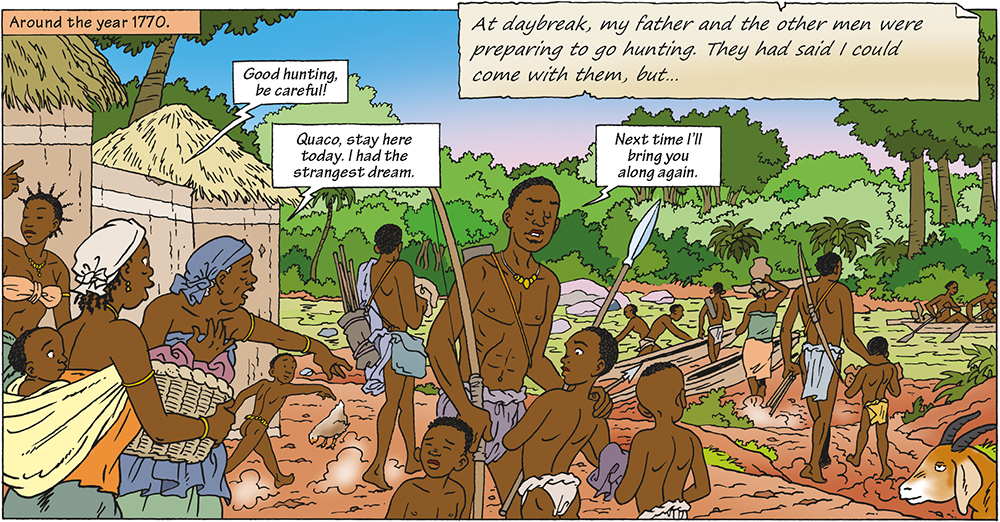
Quaco is playing with his two brothers when they are brutally abducted. He is sold to the captain of a slave ship for a gun and keg of gunpowder. His brother is left behind in the fort on the west coast of Africa.
Together with a girl called Afua, Quaco manages to endure the hardships on board and they swear that they will never abandon or betray one another. Months later, the ship arrives in Suriname. Quaco is sick and on death’s door. Will Quaco ever see his brother again?
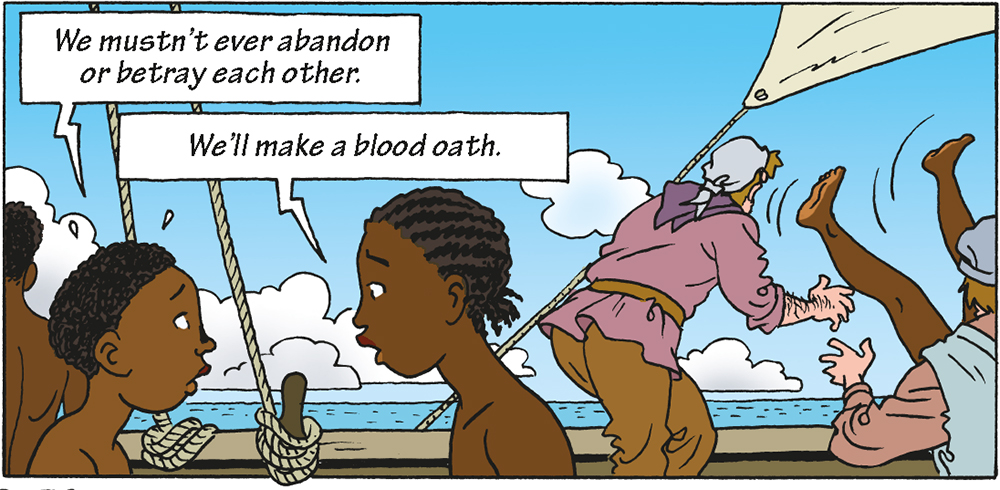
Read the graphic novel (pp. 1-13)
• SLAVERY IN AFRICA • TRANSATLANTIC SLAVE TRADE • TRIANGULAR TRADE
QUACO IN SURINAME
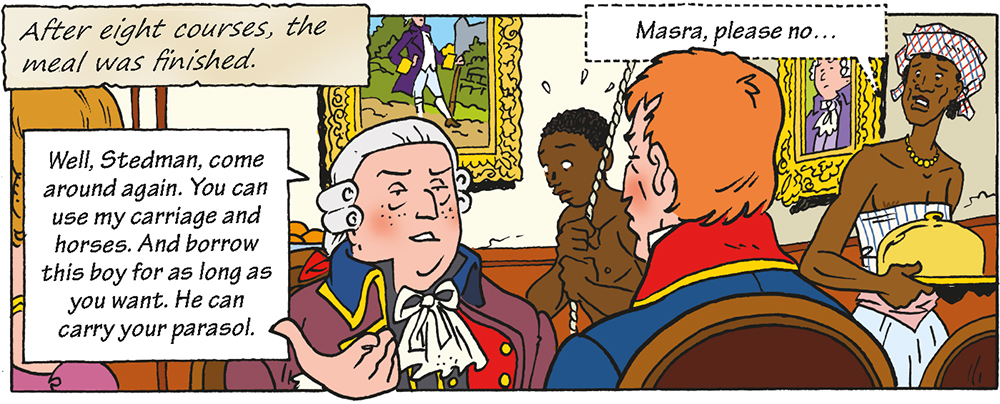
Together with Afua, Quaco finds himself on property belonging to the planter (plantation owner) and Governor Walter Kennedy. Quaco becomes his futuboi (valet) and Afua must look after Kennedy’s young son. The older Olive takes care of them both and tells them about Boni – the leader of a group of maroons (escaped enslaved people). Boni becomes their hero.
One day the army Captain Stedman visits the house and to Quaco’s dismay, Kennedy ‘lends’ him to Stedman. It is with Stedman that Quaco will fight against Boni. But first, he accompanies Stedman on his visits to women and bars. Accompanying Stedman Quaco is confronted with the harsh life on the plantations. While on the road, Quaco looks out for his brother.
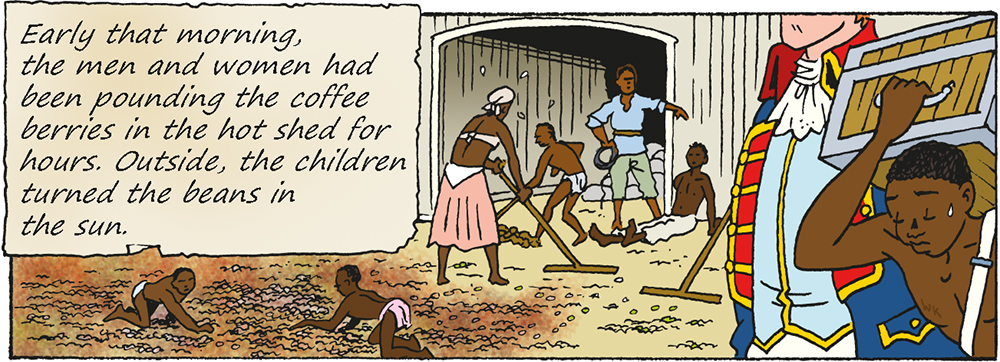
Read the next pages of the graphic novel (pp. 14-31)
• SALE OF PRISONERS FROM A SLAVE SHIP • RACISM • LIFE FOR ENSLAVED PEOPLE IN PARAMARIBO • SUGAR PLANTATIONS AND COFFEE PLANTATIONS
FIGHTING THE MAROONS
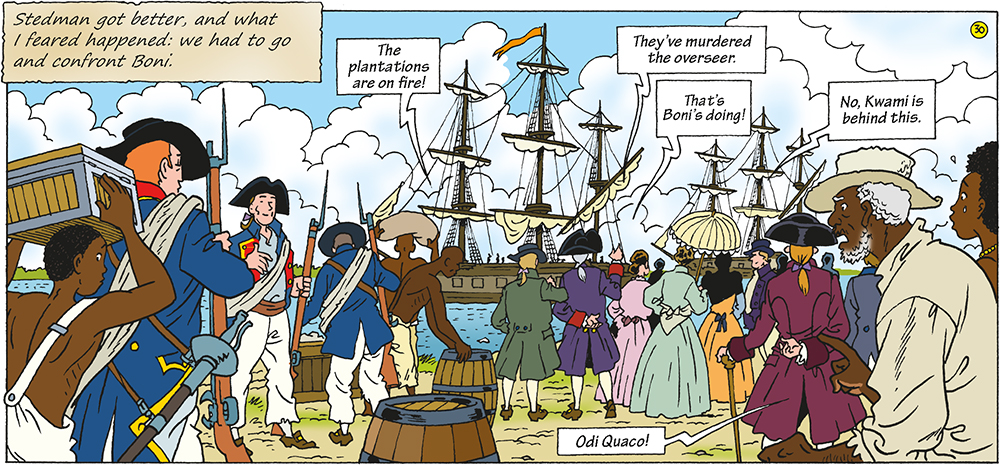
Quaco is forced to join the army expeditions against Boni. Plantations are being set alight and the plantation owners are terrified of more attacks. But the situation in the army camps is dire, the patrols are extremely draining and the fight against Boni weighs on Quaco’s conscience.
Kennedy returns to Holland and Quaco is ‘sold’ to Stedman. Quaco loses sight of Afua as she is moved to the plantations. Quaco is distraught and loses faith.
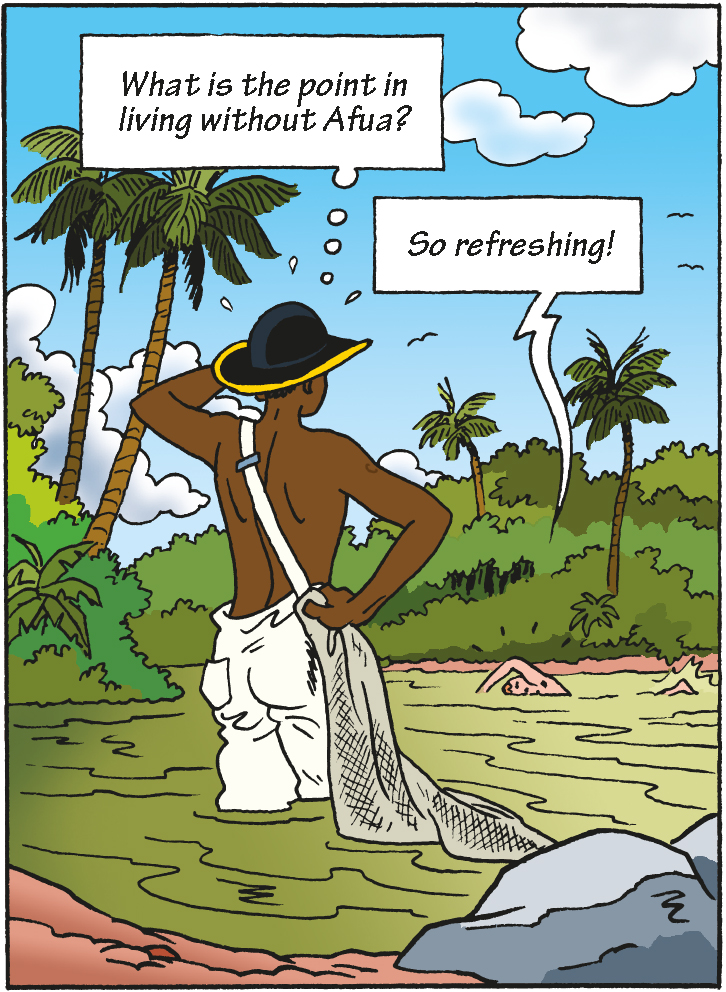
Read the next pages of the graphic novel (pp. 32-47)
• MAROONS AND RESISTANCE
JACOB KÒRSOU
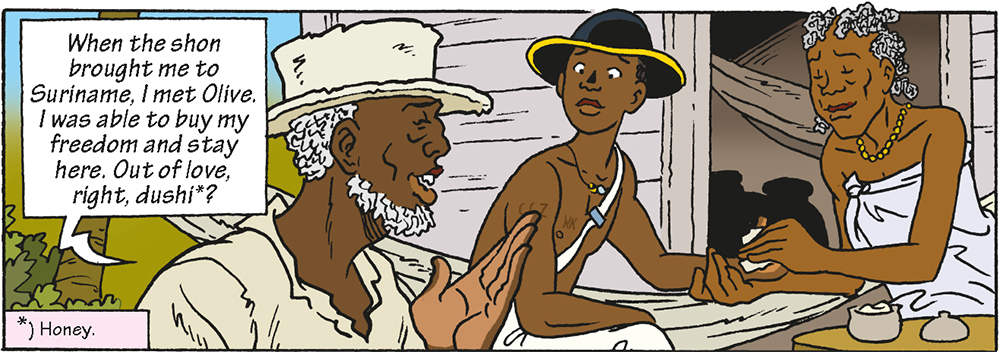
Quaco meets Jacob Kòrsou who lives the elderly Olive now that Kennedy has left. Jacob explains how he ended up as an enslaved person in Curaçao.
Quaco manages to see Afua again, but will their special bond survive? Stedman prepares to return to the Netherlands and he plans to bring Quaco with him…

Quaco meets Jacob Kòrsou who lives the elderly Olive now that Kennedy has left. Jacob explains how he ended up as an enslaved person in Curaçao.
Quaco manages to see Afua again, but will their special bond survive? Stedman prepares to return to the Netherlands and he plans to bring Quaco with him…
Read the next pages of the graphic novel (pp. 48-59)
• SLAVERY IN THE ANTILLES, ESPECIALLY CURAÇAO
IN THE NETHERLANDS

Quaco finds himself in the Netherlands. When finds it more and more difficult to leave his past behind him, he takes an important decision.
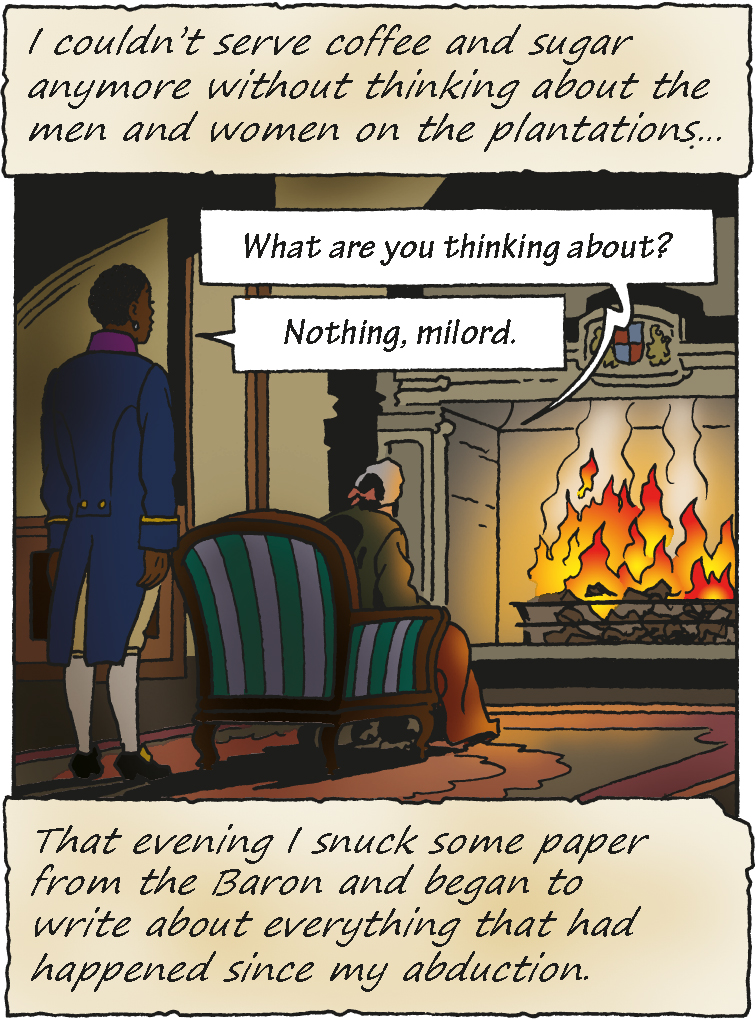
Finish the graphic novel (pp. 60-64)
• AFRICANS IN THE NETHERLANDS, SLAVERY IN THE NETHERLANDS • FRENCH REVOLUTION
BACKGROUND
Quaco
Quaco was a young personal servant or futuboi to the Scottish-Dutch army Captain John Gabriel Stedman (1744-1797). While Quaco is only sparsely mentioned in Stedman’s famous narrative of his five years in Suriname, in this graphic novel Quaco gets to tell his own story.
JOHN GABRIEL STEDMAN
Anyone creating an exhibition or documentary about slavery in Suriname will undoubtedly include images from John Gabriel Stedman’s (1744-1797) illustrated report: Narrative of a Five Years Expedition against the Revolted Negroes of Surinam.
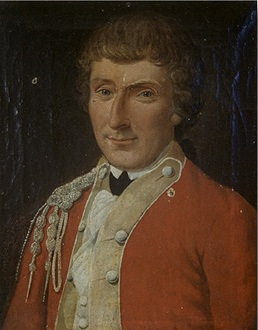
The Scottish-Dutch Captain John Gabriel Stedman arrived in Suriname in 1773 to fight against men and women who fled slavery, known as Maroons. He stayed for four years and kept a diary throughout his time in Suriname. He also made sketches of nature, plantations and people. When he returned to the Netherlands in 1777, he turned it all into a hefty book with eighty illustrations. It took almost twenty years before it was published. By that time, Stedman had long moved to Britain.
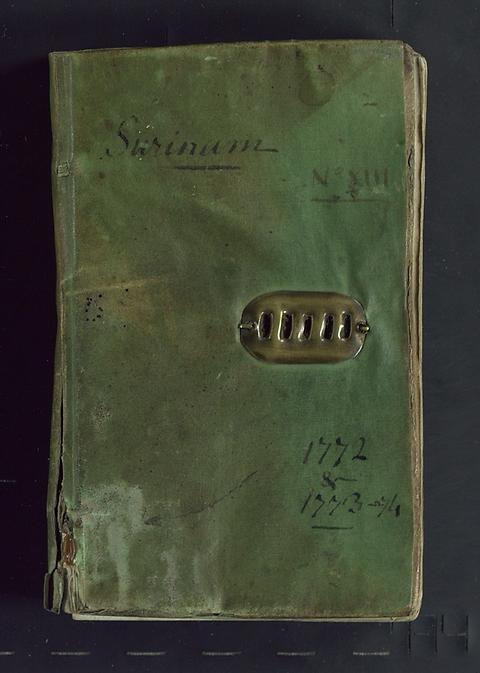
Finish the graphic novel (pp. 60-64)
• AFRICANS IN THE NETHERLANDS, SLAVERY IN THE NETHERLANDS • FRENCH REVOLUTION